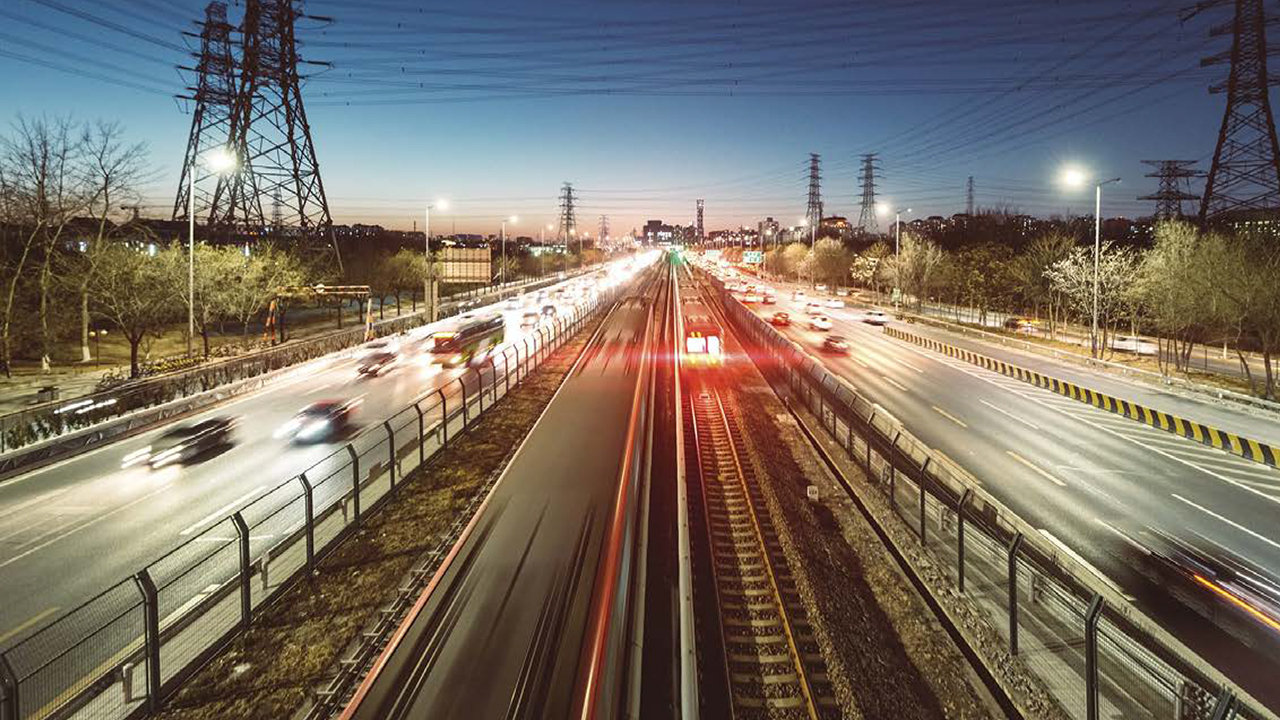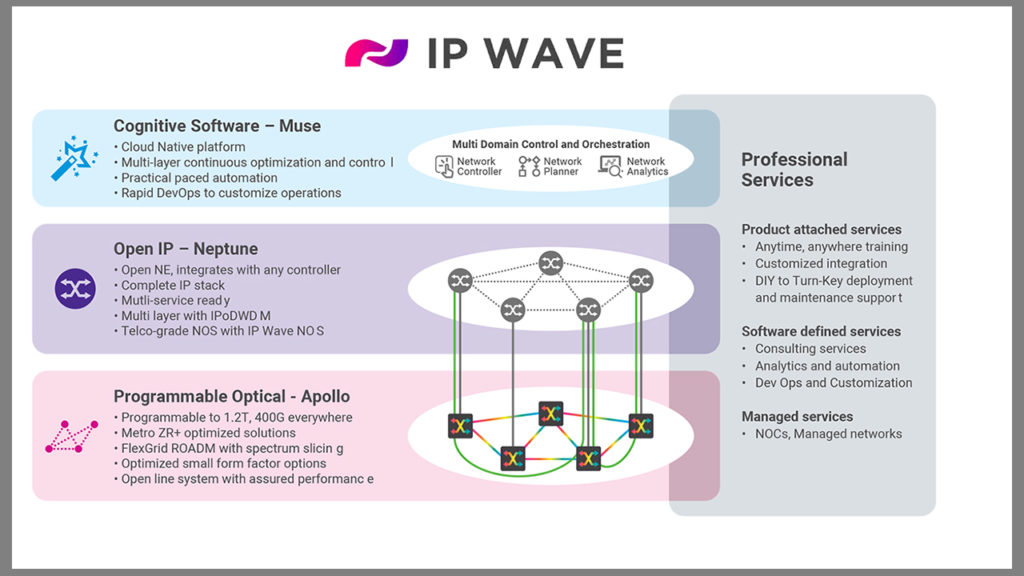
All Aboard the Digitally Transformed Railway
Written by Mike Soulakis, VP Americas, IP Optical Business Unit, Ribbon Communications
System Modernization is Key to Enhancing Security, Building Capacity and Generating Greater ROI
The world is undergoing a dramatic digital transformation and the rail industry cannot afford to be left standing at the station. Increased freight and passenger loads require more technically advanced traffic and inventory control. Passengers are demanding greater amenities, such as online ticketing, scheduling information and on-board Wi-Fi for their mobile devices, or they’ll find some other way to get where they’re going. And increased government regulation means rail operators are accountable for managing massive amounts of data to comply with the latest recommendations and standards.
These challenges are not insurmountable, but a true digital transformation will require significant modernization of outdated IT and OT systems used throughout the rail industry. Ribbon Communications has vast experience working with leading rail operators across the globe. Read on to learn about their digital transformation tips that can keep your network on track.
Communications Networks Are Key to Modern Rail Operations
Rail operators already rely on their communications network to support a wide range of critical systems including access control, ticketing, information kiosks and display screens as well as Wi-Fi and mobile connectivity in stations and on trains. The communications network also enables essential security functions such as video surveillance, facial recognition, general alarm and warning systems, TETRA/Push-To-Talk dispatch systems, and Communications-Based Train Control (CBTC).
Advances like these have allowed operators to increase freight and passenger capacity by adding more trains to their networks and meet growing passenger expectations by offering services such as Wi-Fi access on board and in stations. But system modernization isn’t all a bed of roses. One of the downsides of increasing automation and digitization is an increased risk of cyber-attacks. Individual hackers, governments and private organizations are investing many resources in targeting, paralyzing and obstructing critical infrastructure. In an increasingly dangerous risk environment, cyber-attacks are increasing in both frequency and sophistication.
The problem is the aging IT/OT infrastructure.
Traditionally, rail communications networks were based on robust TDM, SDH and SONET technologies. However, modernizing to telecoms systems based on up-to-date technologies such as IP/MPLS, MPLS-TP, Segment Routing, Flex-Ethernet, Carrier Ethernet and DWDM is inevitable.
As the communications network is modernized, rail operators must take advantage of the opportunity to analyze and improve their cybersecurity and other critical IT/OT systems.
In other words, your cybersecurity–as well as your other vital systems and services–is only as good as your IT/OT systems and your people.
The Opportunities (and Challenges) of System Modernization
While cybersecurity is a major consideration in system modernization, it is certainly not the only one. An upgraded communications network is key to providing rail operators with more control over their mission-critical IT and OT systems, and to providing their staff with better, more efficient services to manage the network.
Like every rail journey, digital transformation begins with mapping out the best route and planning for any potential challenges. To keep the transformation on track, a number of critical issues need to be addressed:
Risk-Free Technology Migration – No matter which technology you choose to modernize the legacy TDM and SDH/SONET-based communications infrastructure, it is essential that migration can be phased to minimize the impact on the operation of critical applications during the migration process.
Support for Mass Video Surveillance – Required for multiple applications, these include, huge CCTV installations, CCTV for use by analytical software for facial recognition, access control, and passenger counting at stations and onboard trains. Real-time CCTV information also enables real-time proactive maintenance, real-time detection of structural failures, and supports advanced capabilities for operational and functional safety.
Always Connected Networking – Provides rail users with in-station and on-the-train access to scheduling information, entertainment systems, work-related applications, mobile broadband, and advertising content, by supporting third, fourth and fifth generation wireless and Wi-Fi networks.
Mission-Critical Systems Support – Must provide the same or better availability, connectivity, operational resilience, and performance characteristics (latency, jitter, errors, bandwidth, etc.) for
signaling, interlocking, level-crossing systems, telemetry, control, and supervision (SCADA) systems.
Service Elasticity – Supporting current and future interfaces and services in the rail network, converging IT services with OT systems, and improving the connectivity of customer services.
Centralized End-to-End Control – With increasingly complex telecoms and rail networks, automated provisioning systems are required to enable fast and secure network operation and reduce the risk of human errors being introduced by manual provisioning.
Real-Time Asset Tracking – Management systems and software require real-time data to allow network assets to be tracked accurately.
Future-Proofing – The communications solution a rail operator chooses must last for at least 20 years. To achieve this longevity, the system must be able to scale capacity and reach as the network grows. It must also seamlessly introduce the latest technologies and management systems whilst continuing to support automation and network technologies from previous generations.
Cyber Security – a holistic strategy based on risk and vulnerability analysis. One that complies with federal regulations and recommendations (see NERC-CIP in the US or ENISA in Europe).
Solving the ROI Puzzle
An improved communications network is also an opportunity to improve existing customer and passenger services and introduce new revenue-generating services, such as Wi-Fi and on-board advertising. The revenue generated from these paid-for services reduces the investment payback period and increases the ROI. Rail operators can also lease their fiber networks to other telecoms service providers, additional even more revenue. The path to support Future Railway Mobile Communications Systems (FRMCS) will lead to the deployment of 5G-ready telecom infrastructure with advanced network slicing and accurate timing and synchronization mechanisms, further enabling rail operators to deliver advanced telecom services for external customers without compromising its own network needs.
Determining return on investment on system modernization can be tricky because it is measured in various ways:
- Improved safety in both operations and maintenance activities, with a target of zero accidents.
- High availability, minimizing system downtime.
- Cyber security to harden the communications networks against network fraud, secure the safety of rail users, and protect active and passive meters.
- Better service and increased passenger and freight capacity. A modernized network must allow the rail infrastructure to be used with increased efficiency.
- Customer satisfaction. A modernized system should allow access to secure mobile broadband allowing passengers to purchase tickets quickly and safely, monitor schedules and timetables in real time, and access work and entertainment applications from their mobile devices.
Ribbon Makes Waves on Rails

Ribbon’s IP Wave is a comprehensive IP and optical networking portfolio ideal for next-generation rail networks. The portfolio meets stringent network capacity, performance, and resiliency demands while minimizing operations expense and complexity. IP Wave includes Optical networking (Apollo), IP routing and packet transport (Neptune), domain orchestration (Muse) and professional services optimized to the needs of rail operators.
IP Wave solutions create better overall economics for delivering secure future-proof telecoms networks optimized to meet the needs of the rail industry. IP Wave enables the rail operators to deal with the multiple challenges they face in running their OT and IT networks today and into the future and has the agility to provide a platform for launching new telecoms services to their customers. Moreover, with the service agility and exceptional economic value IP Wave provides, it is ideal to be used by the rail operators to generate extra revenue by leasing services to other telecoms service providers. But it is not just the product portfolio that makes IP Wave a perfect fit for rail operators. When partnering with Ribbon, we bring the expertise and processes we have built up over many decades of providing telecoms solutions for some of the biggest rail networks in the world.
And, Ribbon’s team of expert engineers will assist every step of the way, from planning to implementation and ongoing system management.
Let Ribbon Communications Drive Your Digital Transformation
The time is now for rail operators to modernize their networks and prepare for the future. The challenge is choosing the best technologies and partnerships to make this process happen. To learn more about how Ribbon can help you apply next-generation telecoms technologies to your rail network, visit our website or download our white paper today.



